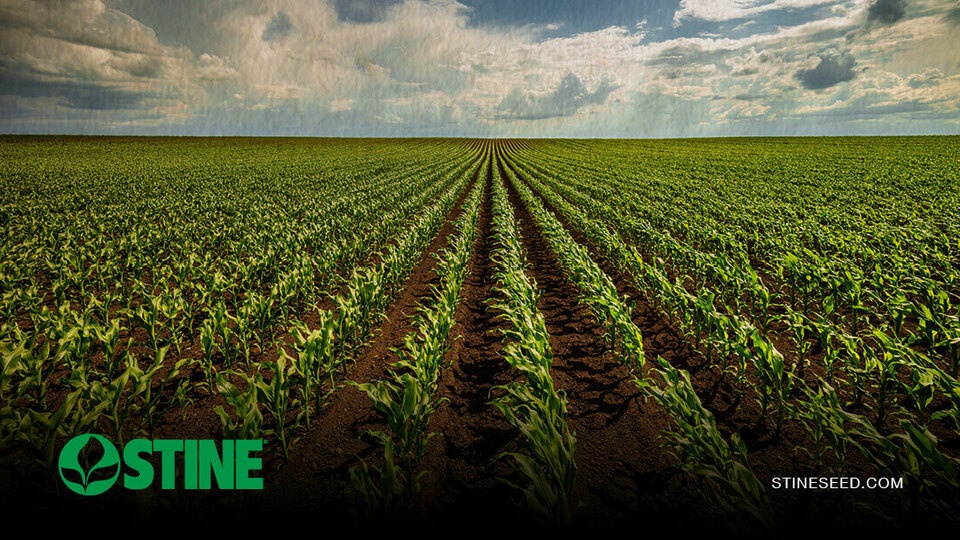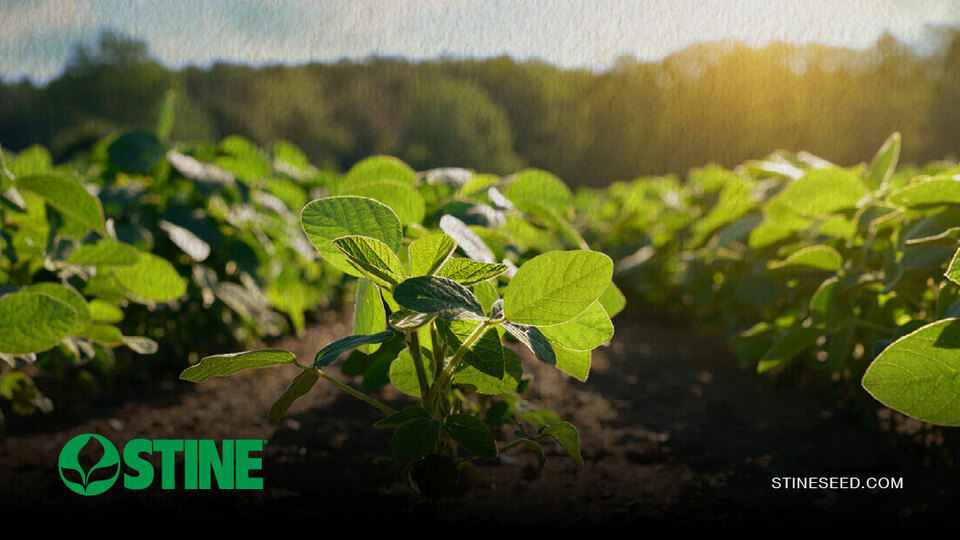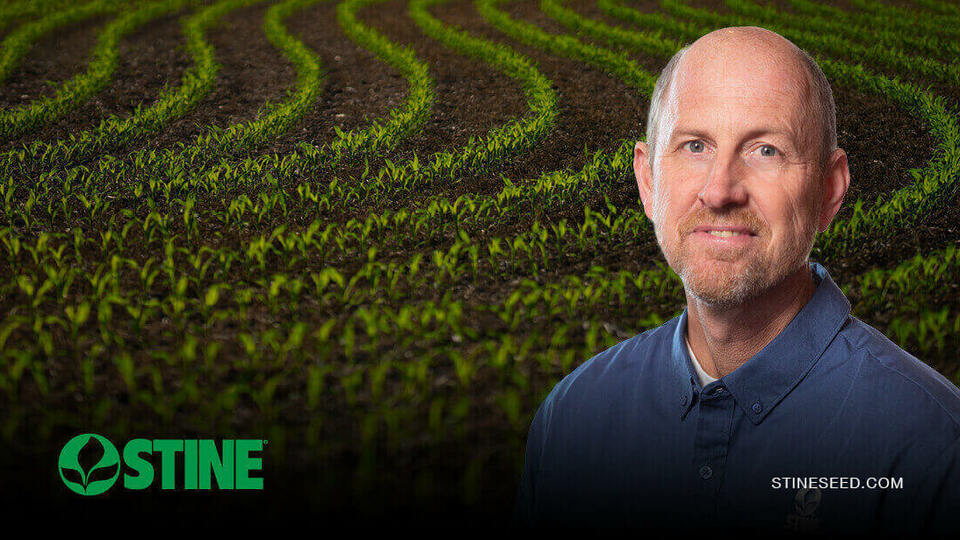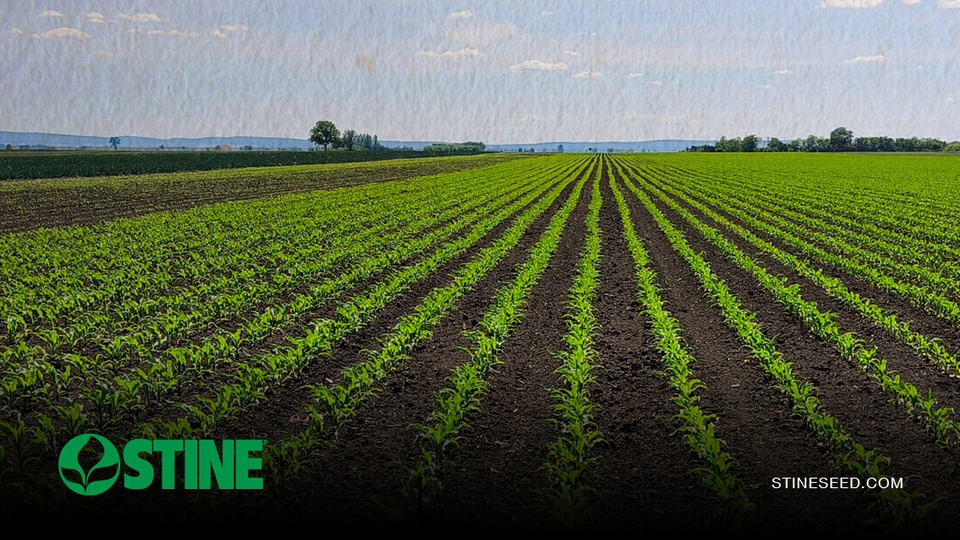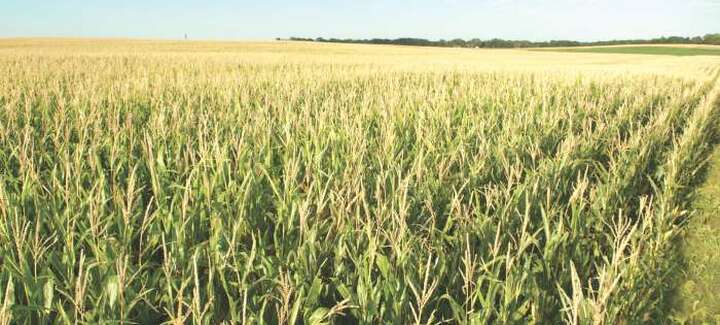
Short corn, short-stature corn, smart corn, reduced-stature corn. There are a lot of different terms for it, but only one company has forged the path to this revolutionary approach to corn breeding. At Stine® Seed Company, we stand firm that we had short corn first. As the industry experts and earliest adopters of this revolution, we want growers to fully understand the advantages of short corn and that Stine is available to answer any questions about this approach and its best management practices.
Let’s start with the basics.
What is short-stature corn?
First, it’s important to understand, “What is short-stature corn?” Technically, it’s just as it sounds: corn bred to produce short corn plants. A typical corn plant can range from 8 to 12 feet in height. Many short corn hybrids in Stine’s lineup are 7 to 8 feet. Back in the mid-1990s, the average height of our hybrids was roughly 105 to 110 inches. Today, however, we’re trending more toward 90 inches. In fact, Stine’s tallest hybrids are still shorter than most of our competitors’. It’s important to know that Stine does not intentionally select short hybrids from its breeding program, they just happen to be the hybrids yielding the most.
“We believe we found the sweet spot when it comes to short corn,” says Myron Stine, company president.
The primary goal is to produce more yield. The architecture of short corn makes it so the seed can be planted in closer proximity, allowing for more plants per acre. This equates to higher yield. Expanding populations of hybrids and the development of shorter corn are not new phenomenons but have been happening steadily over the past 90 years. These have led to the evolution of shorter material over time and something that company founder Harry Stine stumbled upon through his research.
“My father (Harry Stine) discovered the correlation between higher planting populations and shorter corn germplasm by chance through decades of research and data from our own corn breeding program,” says Stine. “He really began pursuing it in the mid-1990s with the adaption of sub-30-inch rows and has continued working with high population, short-stature corn ever since.”
What are the benefits of short corn?
Stine short-stature corn hybrids tend to have girthier stalks, shorter tassels and more upright leaves. These attributes come from generations of breeding plants to thrive in higher planting populations.
The benefits of short corn plants come from their architecture. While the plants have the same number of leaves, they produce more upright leaves that can better harvest sunlight. The plants also produce shorter tassels that grow under the leaves versus towering above (like most hybrids). Having shorter tassels under the upper leaves benefits the plant because 1.) they won’t block the sun from getting on the upper leaf material, and 2.) they are closer to the ear, allowing for more efficient pollination.
The sturdier, shorter stalks of the plant also prove beneficial during extreme weather events and with agronomic issues that can lead to standability problems. With Stine short corn, the ideal ear placement on the plants encourages better harvestability, something competitor brands are still struggling with.
“Through the years with our material, our ear placement has moved up the plant relative to the plant height,” says Stine. “We have heard that is a struggle for other competitors. Fortunately, we don’t have that problem because we’ve been doing this since the mid-1990s. We have more than 30 years of multiple generations of germplasm selection to ensure we have good ear placement.”
From a management standpoint, short corn also allows growers the benefit of in-field applications of fungicides, fertilizers and other crop inputs. With taller corn, growers may have to lean on aerial applications, which can be costlier and less efficient than a ground application.
Can short corn still yield?
Will short corn still produce? The simple answer is, “yes.” Otherwise, why would we and all the competitors now jumping on the bandwagon be pursuing it?
For more than a decade, Stine has had the foresight that high-population, short-stature corn is the way of the future. And that way of thinking isn’t going anywhere as evident by the rapid adoption of this phenomenon. The advantages of short corn are clear, and our data proves that short corn will yield more.
Through Stine’s Elite Yield Trails, we have advanced short corn products that have been time-tested generation after generation for ultimate performance. Because our shorter material has evolved to produce plants with better standability, more upright leaves for superior utilization of sunlight, ideal ear placement, less biomass per plant and the ability to thrive in higher population environments, we’ve essentially produced corn that yields better.
“Our focus on short-stature corn is not for the sake of being short but rather to achieve specific benefits and optimize yield potential,” says Stine. “Growers are not purchasing short corn for the visual aspect but to achieve higher populations and more corn per acre to maximize yield potential.”
To learn more about Stine short-stature corn and how you can adopt this revolutionary practice on your farm, contact your local Stine independent sales representative.
Related Articles
-

Standing out by being shorter: All about short-stature corn
June 2025 in Agronomy
-

Stay ahead of midseason threats
June 2025 in Agronomy
-

Staying ahead with early-season crop scouting and weed management
June 2025 in Agronomy
-

Nutrient strategies to push yield this season
May 2025 in Agronomy
